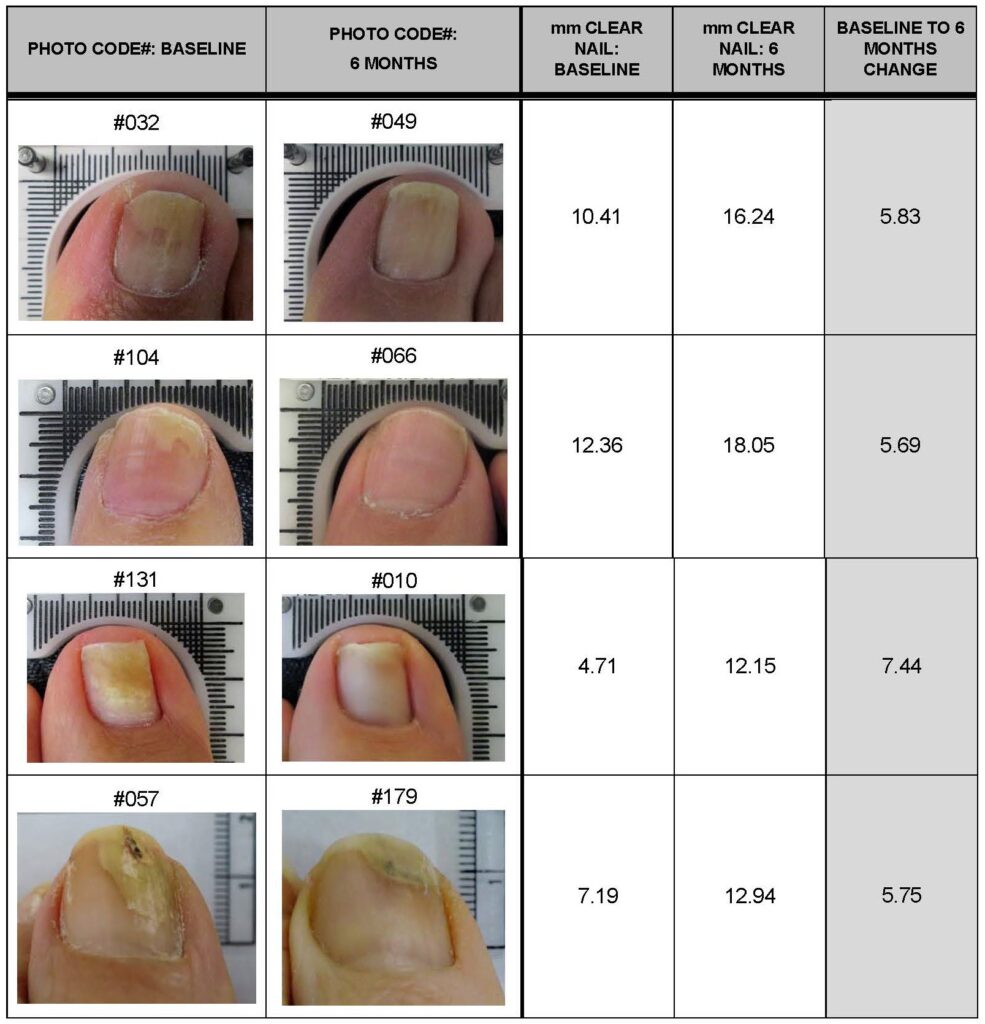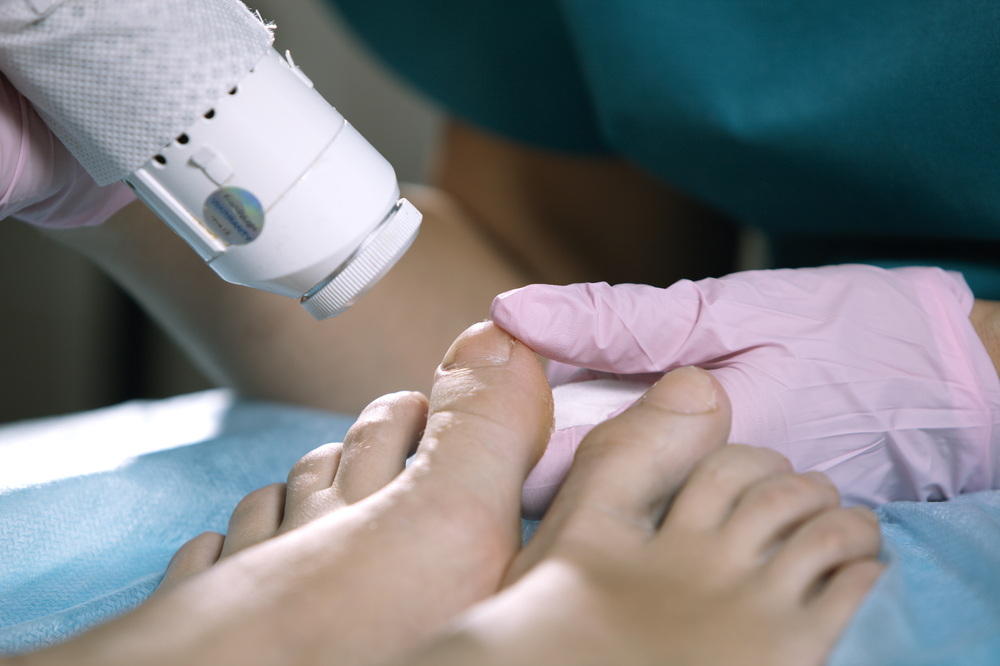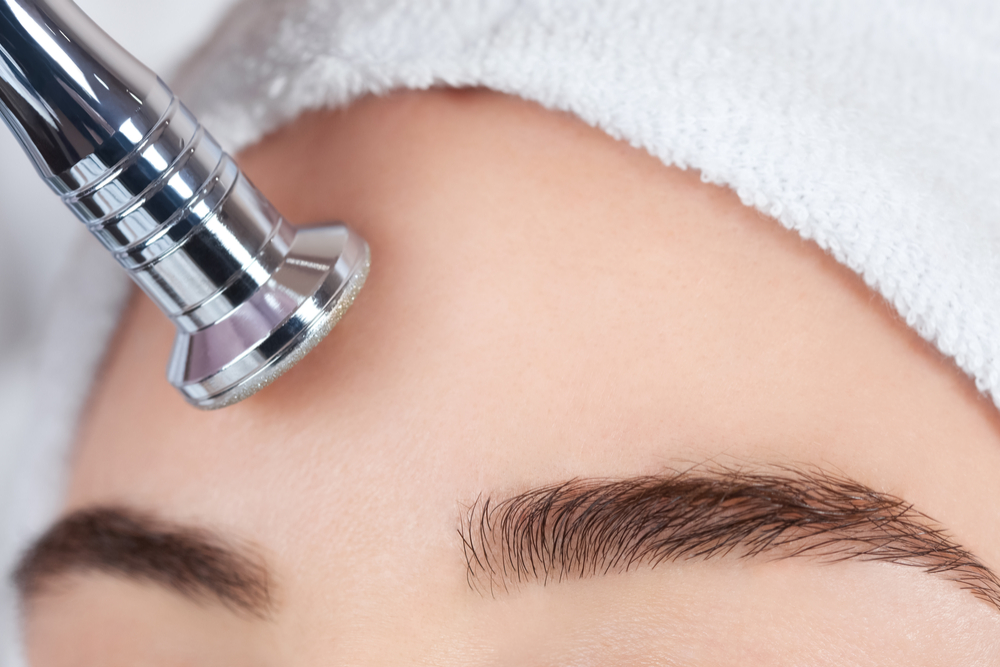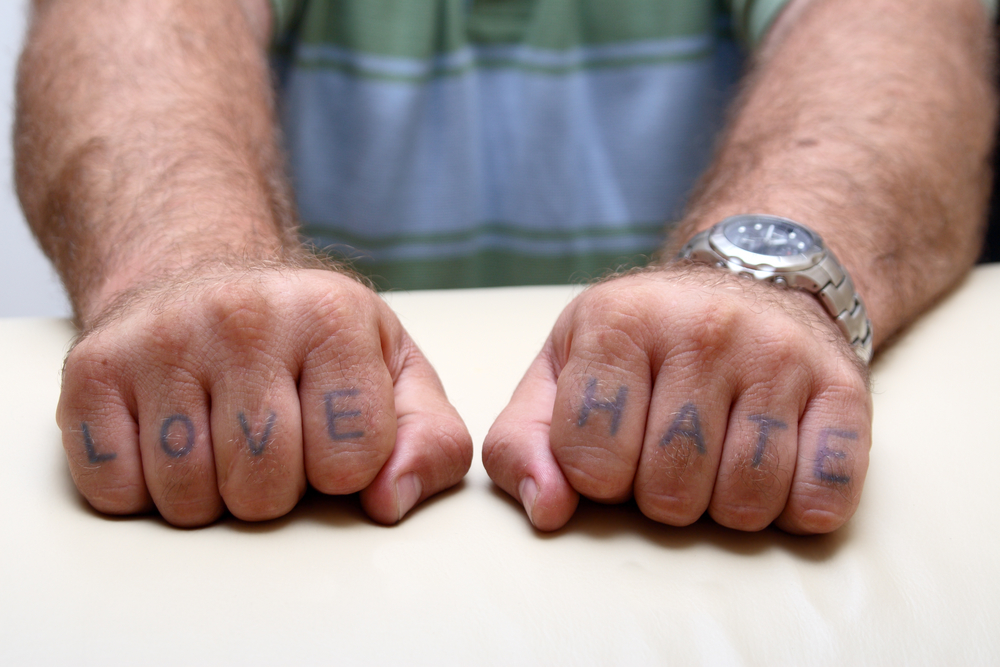- Toenail fungus can have a huge impact on self-confidence and quality of life.
- Laser therapy shows promising results but can be costly.
- Q-switched lasers are a recent breakthrough that may cure toenail fungus without side effects.
There’s no question that toenail fungus is unpleasant, and often embarrassing. If you’ve tried different products without success, you have likely discovered how difficult it is to get rid of the hardened, disfigured and yellow appearance of infected toenails.
Laser treatment of toenail fungus gives many people hope that this frustrating condition can be cured safely and precisely. But how does laser treatment work? How much does it cost? And how does it compare to other treatment options? Read on to find out.
What Is Toenail Fungus?
Toenail fungus, also known as onychomycosis, is the most common nail disorder in adults, affecting one in every 10 people.
Most people with toenail fungus avoid wearing open-toed footwear – some can’t even bear to look at their feet. However, it’s more than a cosmetic problem. This chronic infection can be painful and especially bothersome if you have to spend long periods of time walking or standing every day. In severe cases, the entire nail can fall off. The fungus can also spread to other parts of the body or even to people with whom you come into close contact.
Toenail fungus is caused by the same fungi that attacks the skin in athlete’s foot. Nail injury or a family history of toenail fungus can increase your risk. It’s much more common in people with a weakened immune system, including the elderly and diabetics. In fact, toenail fungus troubles half of all diabetes sufferers and can cause ulcers that may lead to amputation in the long-run.
Available Treatments
For years, strong oral prescription drugs (antifungals) have been the gold standard of treatment. But these can also cause serious side effects, interact with other drugs, and are contraindicated in people with liver disease. The cure rate is about 75% after three months of treatment.
Nail lacquer, gels, and creams are the first go-to option for most people. But topical treatments may only improve milder symptoms and can’t reach deep under the nail. You need to use them daily for at least six months to see improvements.
Surgical removal or chemical dissolution of the nail are invasive and traumatic. There is a lack of evidence to support these methods. You are also at risk for reinfection while waiting for the nail to grow back.
Laser treatment was born out of a need to find a solution that works but won’t cause serious side effects or interact with other drugs. One of the best things about laser treatment is that it’s selective — it delivers energy directly to the toenails without causing serious side effects. However, it can be costly, unpleasant, require multiple sessions and, in the end, the infection can come back.
How Does Laser Treatment Work?
Most lasers work by delivering pulses of energy to heat the affected toenail. Heat kills the fungus, leaving healthy tissue unharmed. Pigments in fungi may speed up the effect. There are different types of lasers available for therapy.
Cold lasers work by shining a laser light on the affected area without heating it up. Light boosts the body’s natural immune system to fight the fungus. The beam of light also increases rejuvenation to speed up healthy nail growth.
Yet, opinions are divided on cold lasers and some experts remain skeptical. “Laser treatments for nail fungus do work but it has to be done properly” explains Dr. Bruce E. Katz, Clinical Professor at the Icahn School of Medicine at Mt. Sinai and Director of the Juva Skin & Laser Center in New York, NY. “Only hot lasers work because it is the heat from the laser that destroys the fungus,” concludes Dr. Katz.
Choosing a Laser Treatment
Most lasers approved by the FDA are short-pulse lasers. They work using very fast pulses or continuously. Long-pulse lasers use slower pulses.
Q-switched lasers are the newest innovation, delivering ultra-short pulses in just nanoseconds. Meanwhile, cold lasers use two lower wavelengths of laser light to tackle toenail fungus.
Lastly, there are carbon dioxide lasers, which were used in the past but are currently outdated.
Long Pulsed Laser
PinPointe FootLaser was the first to be approved by the FDA in 2010. Treatment takes about 30 minutes and the laser emits a long pulse that can apply more energy with less heating. Many podiatrists reported success with this laser, including Dr. Bruce Pinker, Associate at the American College of Foot & Ankle Surgeons based in White Plains, NY.
“I have treated thousands of patients successfully with the PinPointe Laser. We have found it to be highly effective in resolving all types of fungal toenail infections in addition to yeast and mold toenail infections.” says Dr. Pinker. He emphasizes that PinPointe is effective, safe and produces excellent results in most patients. The only issue seems to be patient compliance. “Some patients do not follow up and some do not follow our post-treatment instructions,” Dr. Pinker notes.
Q-Switched Lasers
Another newer addition is the Q-Clear Compact Laser from Light Age, which belongs to the latest class of Q-switched lasers. The treatment takes 4-15 minutes and results are visible after only one session. Also in this class of lasers is the Lightpod Neo from Aerolase.
Dr. Katz uses LightPod Neo in combination with Pro-Nox, a pain-reducing nitrous oxide system that ensures patient comfort during the treamtent. “Usually 5-6 treatments are necessary and are performed every two weeks.” he adds.
Heat Lasers
In the heat laser category, there’s the Cutera Genesis plus. Treatment with this powerful heat laser takes 10-30 minutes and can be adjusted to nail thickness for better results.
JOULE ClearSense is another similar laser that generates improvement after one 15- to 20-minute session.
CoolTouch VARIABreeze is a heat laser that uses adjustments to reach the right temperature without overheating. A cooling spray is applied to the toes before each 15- to 20-minute session to reduce discomfort.
Cold Lasers
LunulaLaser is a new low-cost cold laser. Sessions usually take 5-12 minutes and at least four procedures are needed. It treats the entire nail and is odor-free (unlike heat lasers).
Noveon NaiLaser is a cold laser that can treat four toes at the same time. Sessions take about half an hour. Mild cases require two treatments while severe cases need four.

Are Toenail Fungus Laser Treatments Effective?
There are many different types of lasers that are currently used to treat toenail fungus and they all have different modes of action. So, do they work? In this section, we review the clinical evidence for laser treatments used alone or in combination with topical treatments.
Standalone Laser Treatments
In a large study of 131 patients, Q-Clear was shown to improve toenail fungus infection. All patients were satisfied with the treatment and nearly all (95%) were cured after two sessions performed a month apart.
In another study, short-pulse laser therapy was shown to improve severe cases but was not able to cure the fungus. Most patients would recommend it and other studies have confirmed the benefits. A retrospective study showed that LunulaLaser cleared up most toenails after four sessions. Six months later, patients had new and improved nail growth. On the contrary, in a later study, short-pulse laser treatment didn’t help 30 patients after three months of treatment.
In a small study, long-pulse laser therapy improved toenail fungus in 120 patients after a single session. It also improved toenail fungus in 33 patients. All patients received four or eight sessions each. However, long-pulse laser therapy showed no effect in 27 patients after 3 or 12 months of treatment in an alternate study.
Combination Treatments
In terms of topical treatment that can be used in conjunction with laser therapy, a small study showed that Noveon laser treatment improved toenail fungus after four sessions. Patients were also treated with medicated creams and nine months later, four in ten were completely cured.
In another small study, short-pulse laser and topical treatment improved toenail fungus in seven out of eight patients after two or three sessions. Lastly, in a study of 128 participants short-pulse laser treatment combined with nail lacquer improved toenail fungus after four sessions.
Other Important Factors to Consider
Aside from efficacy, it’s important to factor in costs, side effects and duration of treatment needed to yield positive results. In this section, we break down these additional important considerations to help narrow down your choices.
How Much Does It Cost?
One PinPointe laser treatment can cost about $1,000. Meanwhile, LightPod Neo costs $395 per treatment. Cutera GenesisPlus cost depends on the number and thickness of nails treated. For all 10 toenails, one treatment is around $1,000. A follow-up is usually only $100. VARIABreeze costs $275 and up per session. In the cold laser category, one treatment is usually close to $150.
Clinics often offer package deals, so make sure you inquire. Note that laser treatment is not covered by most insurance companies.
Are There Any Side Effects?
Overall, laser treatment has minimal side effects reported. Q-Switched and cold laser studies report no side effects whatsoever.
During heat laser treatment, one in three people reported pain, burning or darkening in the treated area. Note that heat applied in this manner can generate unpleasant laser plumes and a certain smell. Also, laser light can decrease collagen.
When Can I Expect to See Results?
You may see some improvement in just a few weeks, but you’ll need to wait a couple of months for the nail to grow out to see better results. It takes at least six months for complete nail regrowth.
Maintaining good foot hygiene and using certain care techniques (i.e. wearing breathable shoes and socks as well as avoiding common triggers) can help reduce the chance of the fungus coming back after treatment.
The Last Word on Lasers
Among laser therapies available, Q-switched laser therapy is the most promising solution as a standalone treatment. It’s uncertain if other lasers can treat toenail fungus. In terms of available supporting evidence, long-pulse lasers are the least backed-up by clinical studies.
It’s worth noting that laser therapy may be beneficial and safe when used in combination with topical treatments. When in doubt, connect with our medical review team before choosing a treatment that’s right for you..









